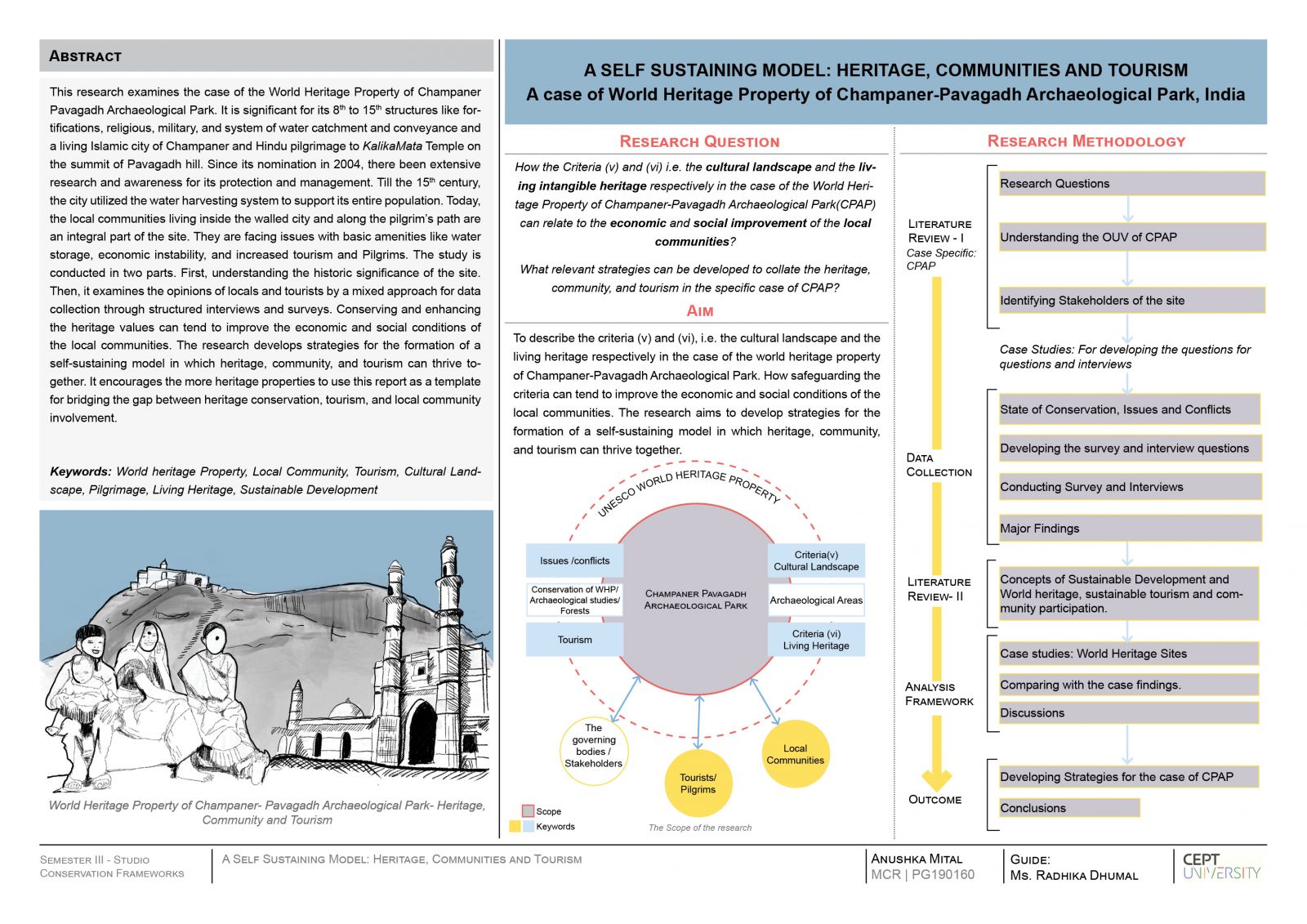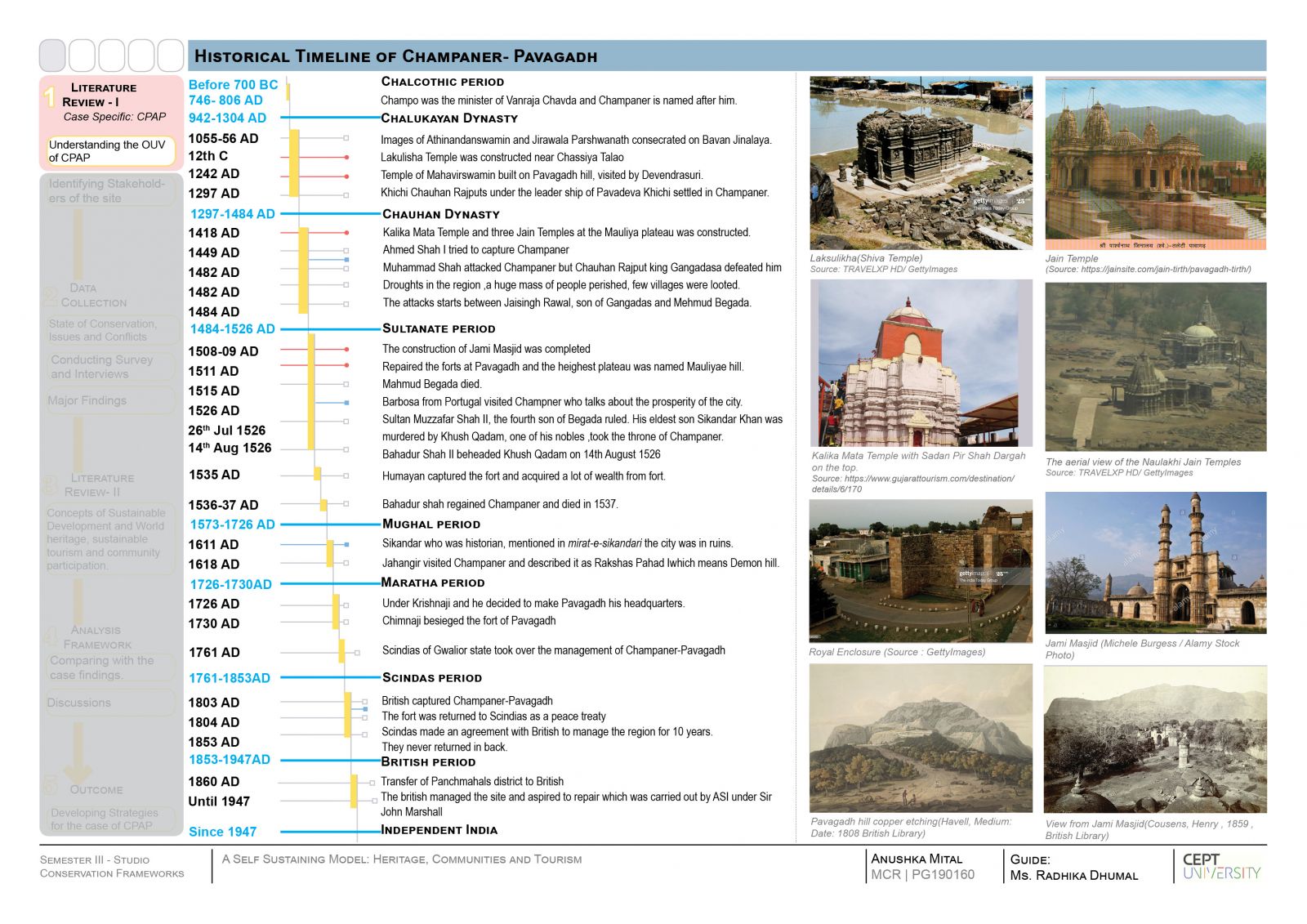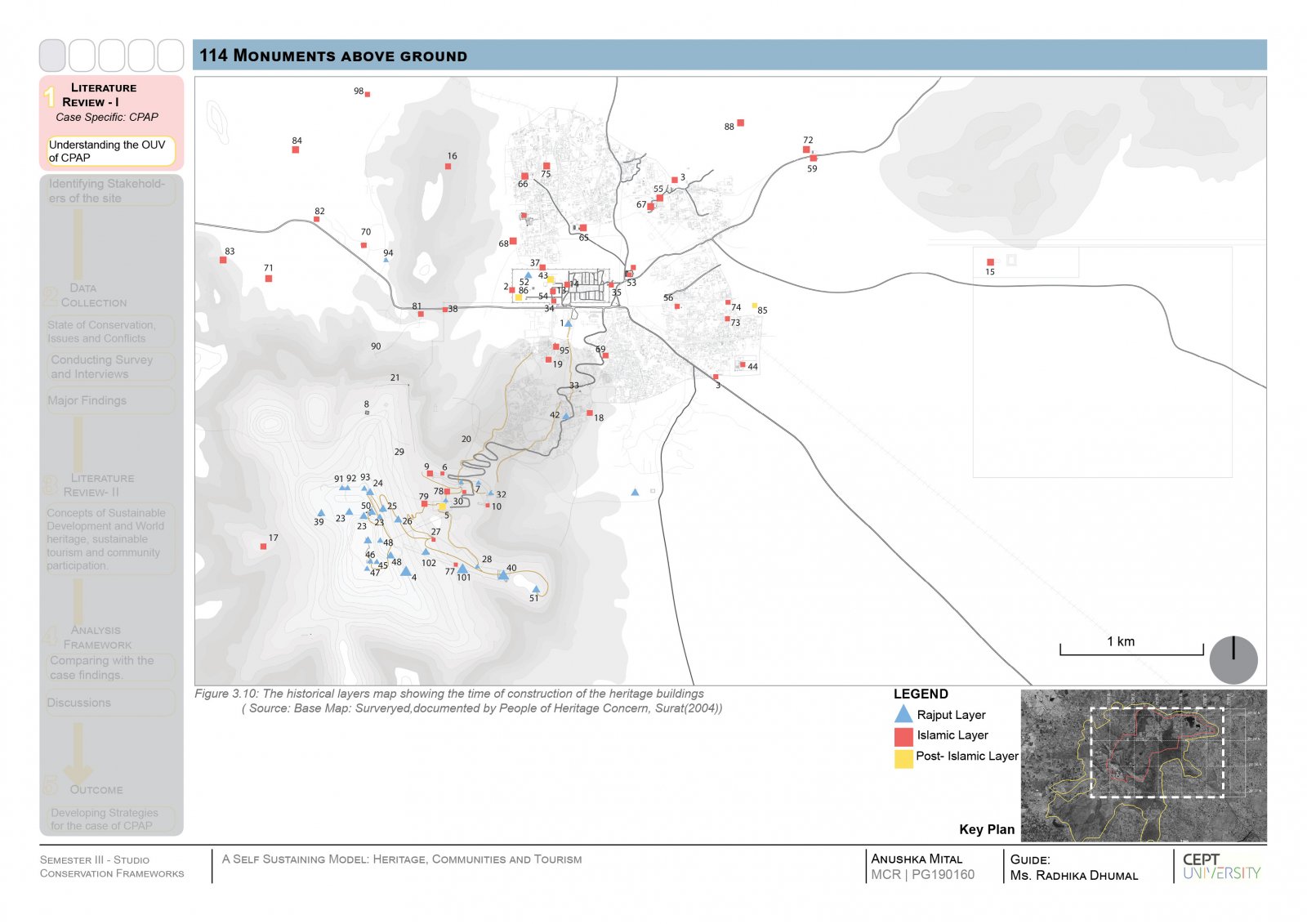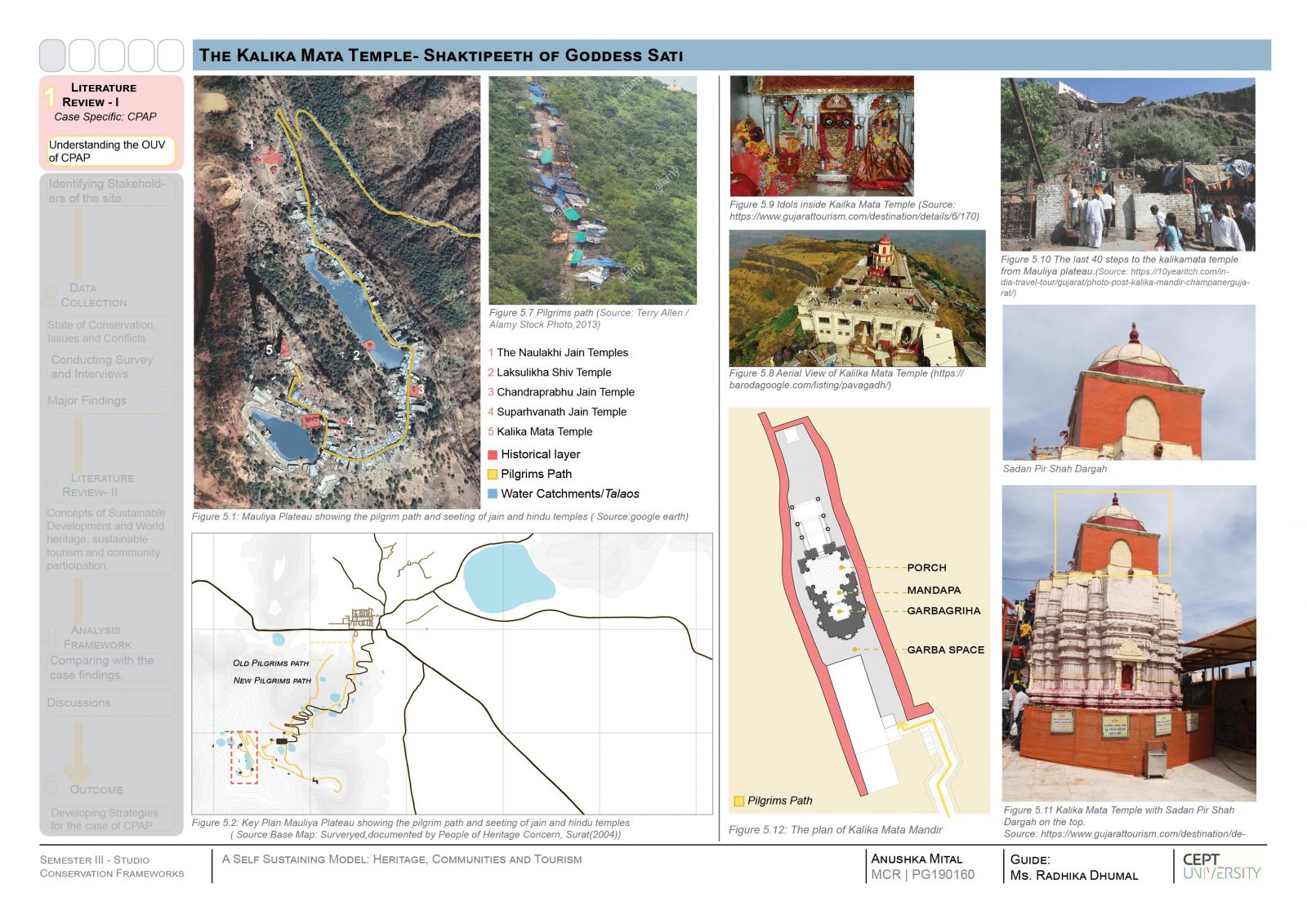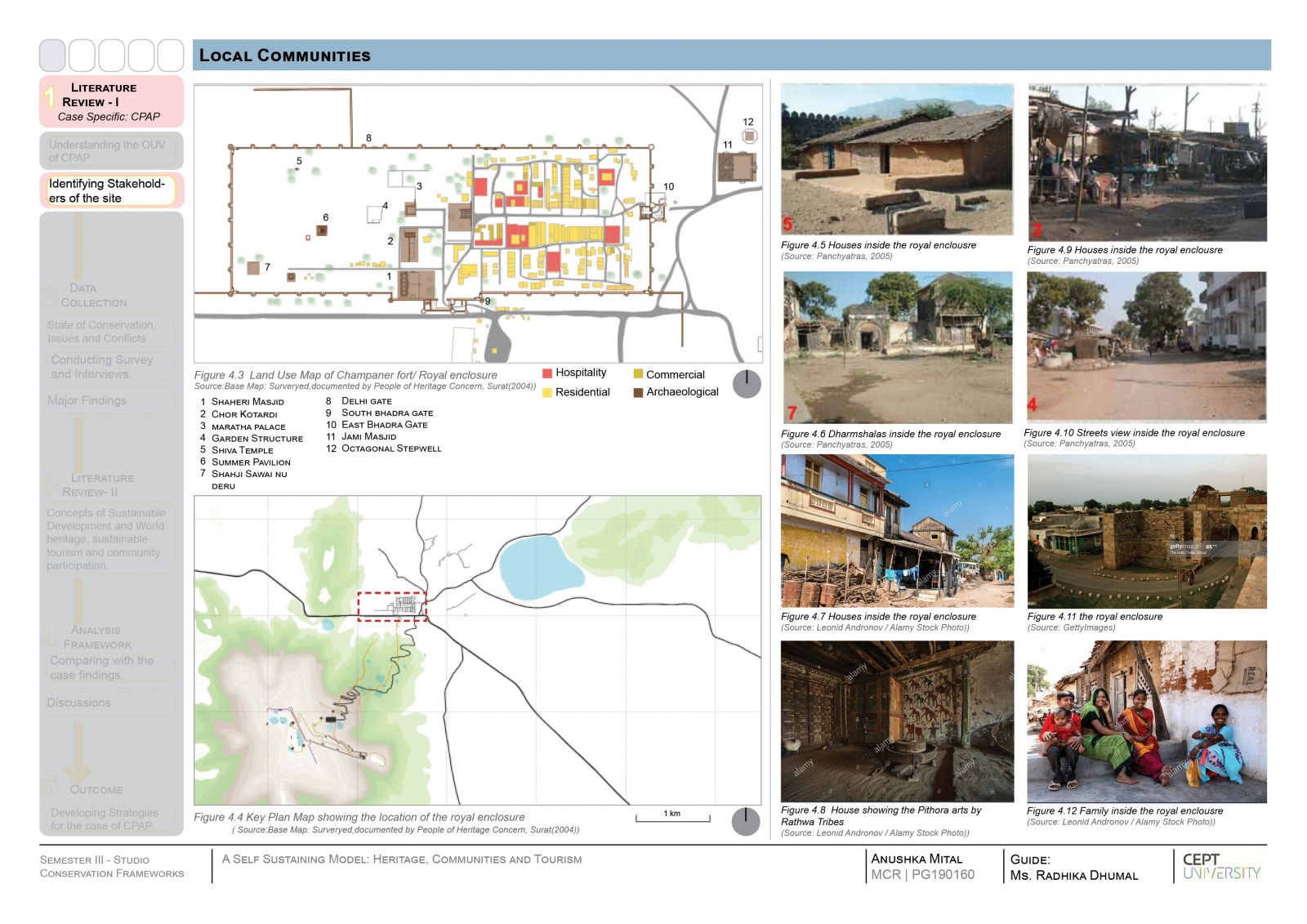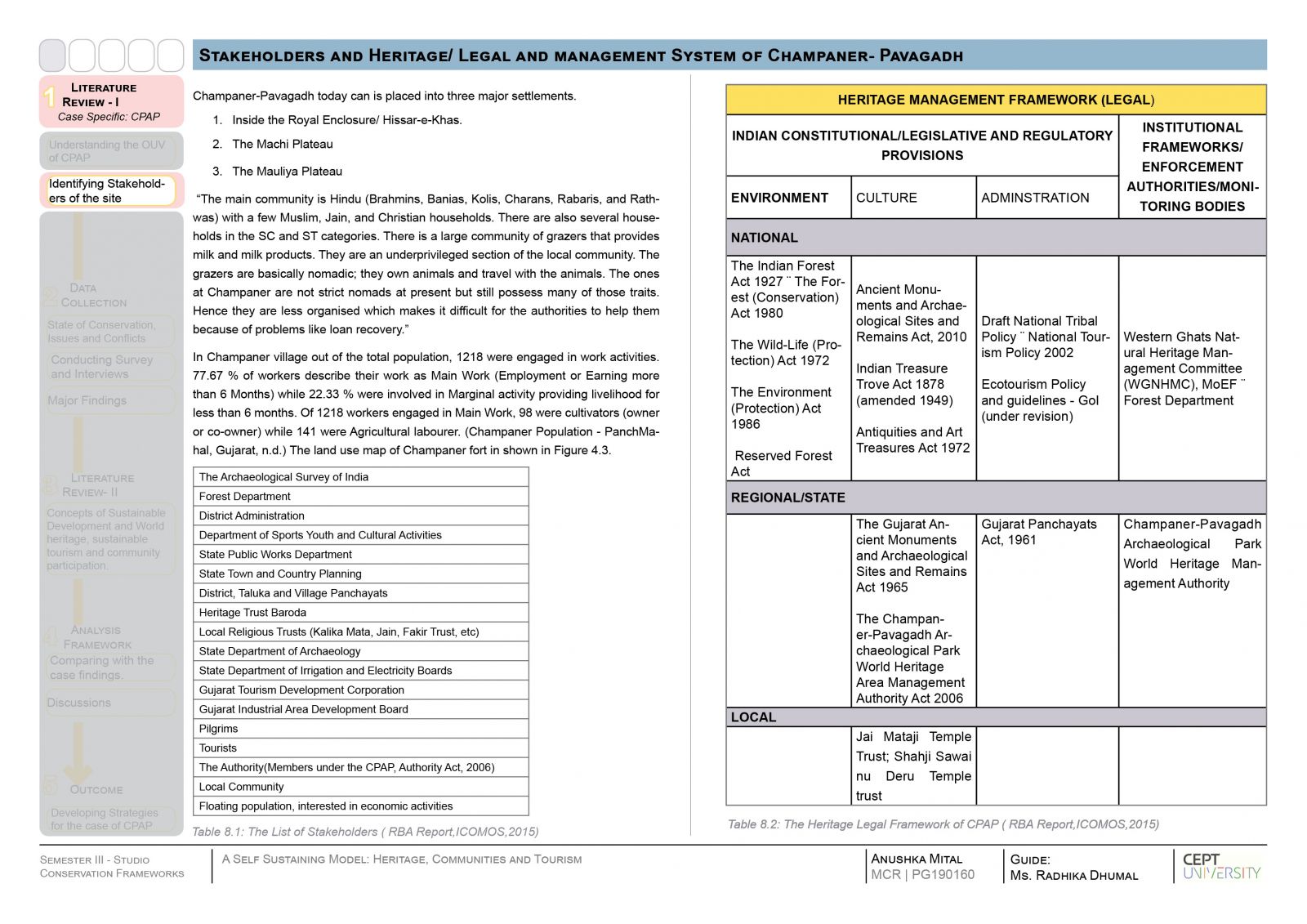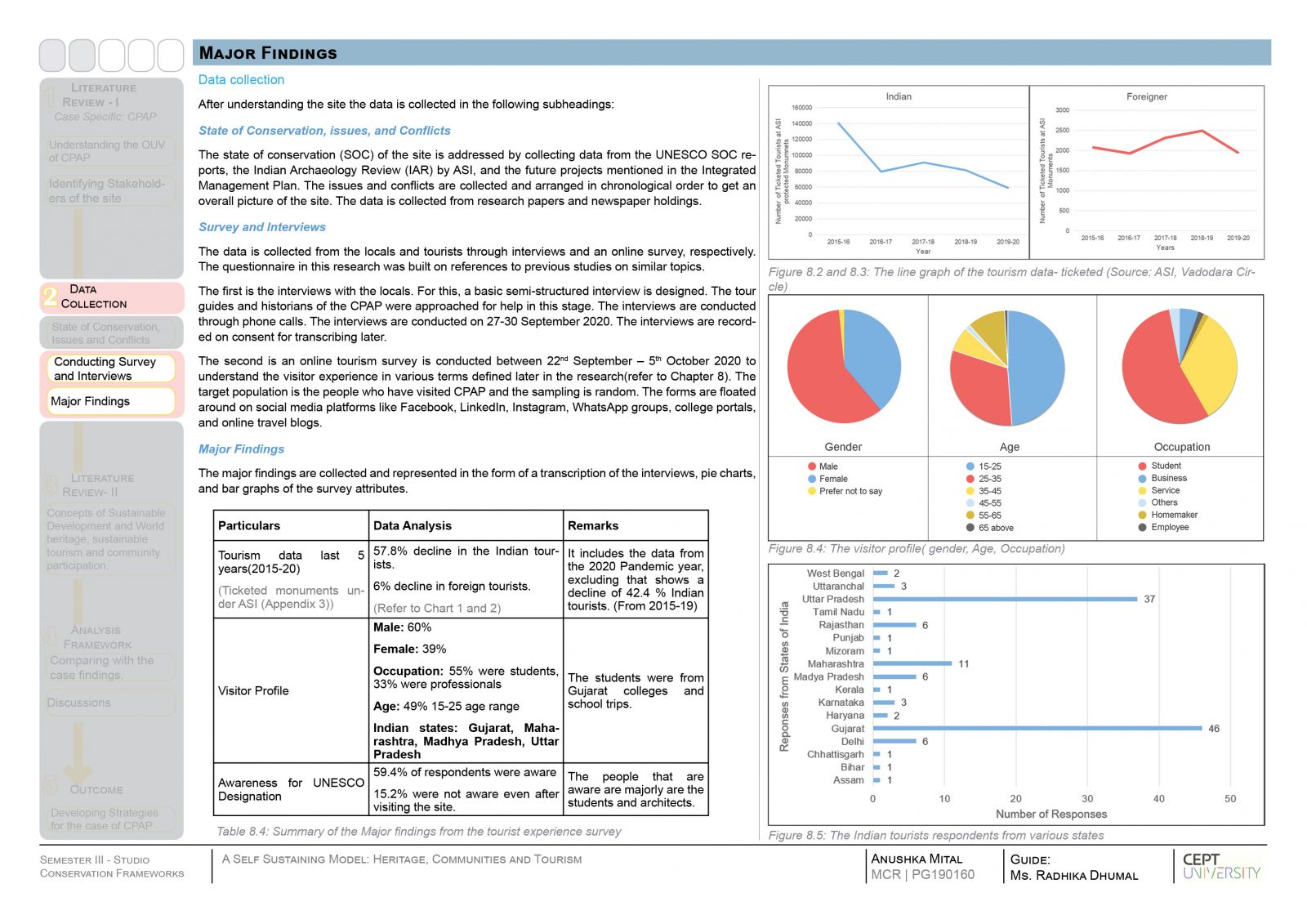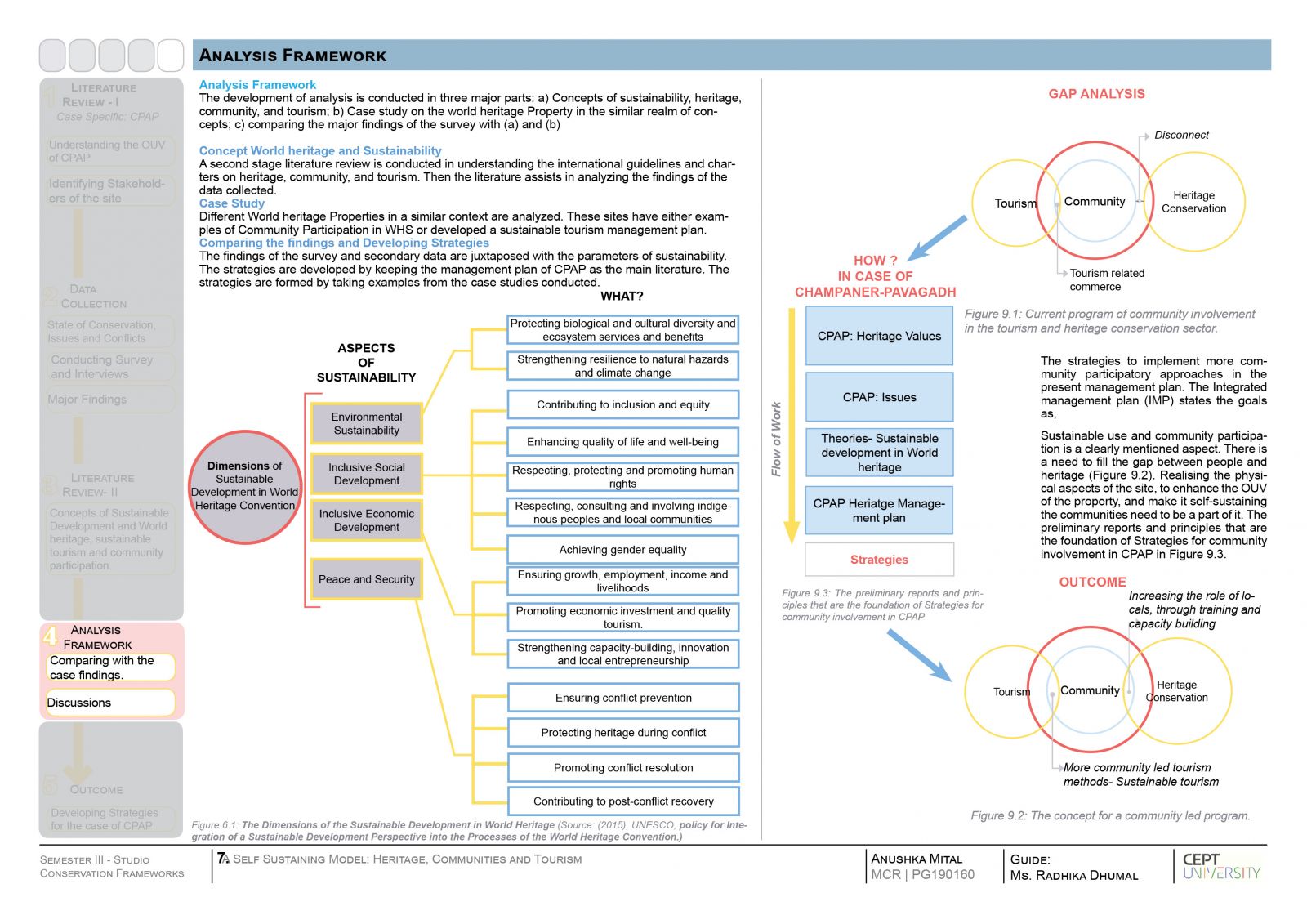Your browser is out-of-date!
For a richer surfing experience on our website, please update your browser. Update my browser now!
For a richer surfing experience on our website, please update your browser. Update my browser now!
This research examines the case of the World Heritage Property of Champaner Pavagadh Archaeological Park. It is significant for it's 8th to 15th structures like fortifications, religious, military, and system of water catchment and conveyance and a living Islamic city of Champaner and Hindu pilgrimage to Kalika Mata Temple on the summit of Pavagadh hill. Since its nomination in 2004, there been extensive research and awareness for its protection and management. Till the 15th century, the city utilized the water harvesting system to support its entire population. Today, the local communities living inside the walled city and along the pilgrim’s path are an integral part of the site. They are facing issues with basic amenities like water storage, economic instability, and increased Pilgrimage. The study is conducted in two parts. First, understanding the historic significance of the site. Then, it examines the opinions of locals and tourists by a mixed approach for data collection through structured interviews and surveys. Conserving and enhancing the heritage values can tend to improve the economic and social conditions of the local communities. The research develops strategies for the formation of a self-sustaining model in which heritage, community, and tourism can thrive together. It encourages the more heritage properties to use this report as a template for bridging the gap between heritage conservation, tourism, and local community involvement. To view a five minute elevator pitch of this thesis' research idea(s), please click on the link displayed.
View Additional Work